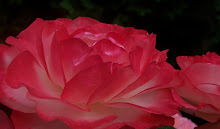The Holy Week is called the Big Week(“Veliki tjedan”) in Croatia. On Palm Sunday (“Cvjetnica”), Croatians traditionally go to church and take a small olive twig to be blessed. On Friday, different kinds of fish are eaten. Saturday is the customary day to dye eggs. Easter Sunday involves going to the early morning mass with small baskets filled with food to be blessed; eating a breakfast of ham, eggs, grated horse radish, spring onion and home-made bread; and a dinner of turkey. Little children might also get candy from the Easter Bunny. Easter Monday is for visiting relatives.
One of the oldest traditions is making “klepetaljke” and “cegrtaljke” (very similar to rattles and clappers), particularly popular in central Dalmatia and the Konavle region. Those on the island of Krk are especially interesting: metal plates that hang at the end of a 30cm board produce strong sounds when the device is shaken. In other regions, “klepetaljke” were made differently: small wheels were attached to wooden boards and connected to metal sprockets; the whole device made a rattling noise when pulled.
People used to believe that wine transformed into blood in the body and made people stronger and healthier, and therefore drank it as much as possible for Easter. Documents from the island of Brac show that housewives used to prepare, among other dishes, cod and cabbage — food that makes people thirsty so that they could drink as much as possible.
Since palms can rarely be found on the Adriatic, people mostly use olive or rosemary branches and flowers. Nevertheless, chronicles from the city of Split show that people used to gather on Easter at the only palm tree in the city, located in the garden of a certain inhabitant, in order to collect palm branches. The inhabitants of Brac used to ship palm branches from the island of Vis, where palm trees can be found in abundance, and distribute them to the islanders. The branches were decorated with crosses or wreaths made of ribbons and flowers. This skill was so respected that one decorated branch could be exchanged for Easter bread and 20 colorfully decorated eggs. On the island of Korcula and in the surroundings of Sibenik, olive branches were woven into plaits, while branches were woven into wreaths with crosses in Istria.

Sweet bread (sirnica) is another Easter tradition in Croatia. Made with lots of eggs and sugar, rosewater or orange peel is also added for a sweet smell. Often people dip this sweet bread into a sweet wine called “prosec” to make it taste better. One type of sirnica looks like a baby, and the head is created by a decorated egg. It's called “garitula.”

Coloring and decorating Easter eggs, called “pisanice” (“to write”), is among the oldest Croatian Easter traditions. There are several ways of decorating Easter eggs. The best known method is to use hot liquid wax with the help of pencil-like instruments. After coloring, the wax is removed, revealing the splendid decorations. Before artificial coloring, eggs were colored by being boiled in water with onions, walnuts, roots and herbs. In order to get their shine they were polished with oil before being placed in the basket. Another method of decorating, popular in continental Croatia, was to use a knife, as well as threads of silk and wool, while the third method was to use formic acid. Eggs in the southern part of Croatia are traditionally colored in red and have white star or rosette shaped decorations, while decorations such as pine branches, flowers, circles and spirals are more common in other parts of the country.
Finally, there is one more custom related to Easter eggs - the so-called “tuca” (egg fight). Everyone would choose an egg from the basket and would hit it against their adversary's egg. The winner would be the person whose egg remained intact throughout the “fight.”






No comments:
Post a Comment